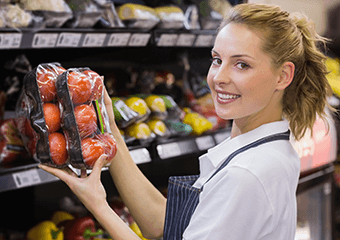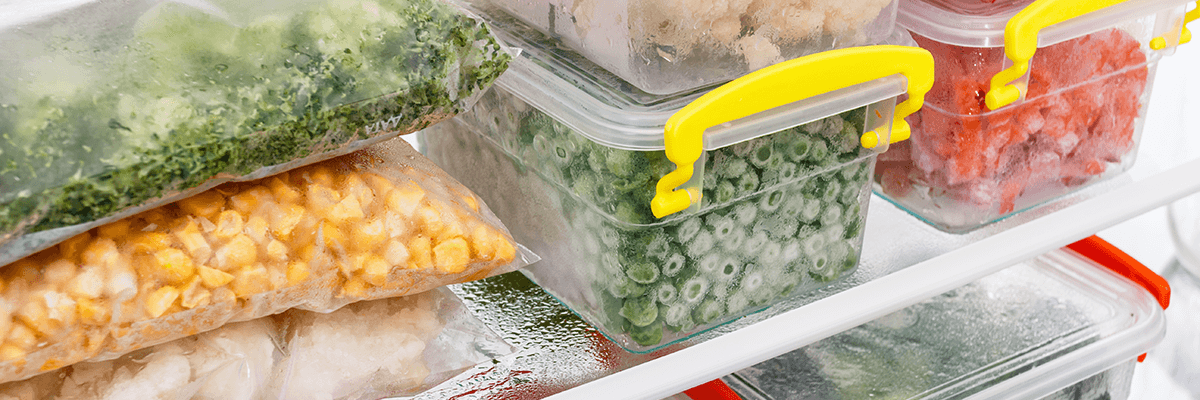Ensuring the safety and the quality of foodstuffs

Stringent EU regulations are in place to safeguard consumer safety. They are updated on a regular basis to reflect the latest scientific evidence, and to meet changing marketing trends and consumer habits. PlasticsEurope has a group of food contact experts to address these regulatory updates and works with its value chain partners, research institutes, regulators and agencies to continually protect consumer safety.
New guidance on exposure assessment for repeated use applications
A new guidance document prepared by joint efforts of Cefic FCA and PlasticsEurope with the support of EuPC is now available.
The document addresses food contact risk assessment for Repeated Use articles such as kitchen and processing equipment.
According to article 19 of Commission Regulation (EC) No 10/2011, a risk assessment of substances not included in the Union list needs to be performed to assess the safety of the food contact materials in scope of this regulation.
The new guidance provides a tiered approach for exposure assessment of migrants released from repeated use articles. A special focus is provided to Non-Listed Substances (NLS) and Non Intentionally Added Substances (NIAS) in repeated use applications.
The exposure assessment is a critical step towards a full risk assessment as Risk = Hazard X Exposure.
The hazard part and the principles of risk assessment are common to single use and repeated use articles. The details of the hazard assessment and risk assessment itself of NLS and NIAS are already available (click here).
The new guidance document is called:
FOOD CONTACT REPEATED USE APPLICATIONS (Guidance REV 2)
Proposals for exposure assessments for plastic intermediate materials and articles in the frame of article 19 of Plastic Regulation (EU) No 10/2011
If you are interested to obtain a copy, please contact Sabine Lindner (sabine.lindner(at)plasticseurope.org).
Related publication:
Repeated migration of additives from a polymeric article in food simulants
Highlights:
- Repeated migrations of three additives from polypropylene into five liquid food simulants were determined experimentally.
- The repeated migrations were calculated using two different sets of diffusion and partition coefficients as input parameters.
- A first set resulted from the actual recommendations of a practical guidance document to Regulation (EU) 10/2011 .
- The second set resulted from a best fit of the experimental results.
- The differences between these calculated results are presented and discussed.
More information on food contact regulations can be found at:
http://ec.europa.eu/food/food/chemicalsafety/foodcontact/eu_legisl_en.htm
To support the understanding of the regulations PlasticsEurope has jointly published with Cefic-FCA a Summary of terms and definitions relevant to food contact
Over the last couple of years, the number of expert terms used in food contact has increased. Especially in the beginning, this number might be intimidating and the exact definitions, while vital, are not necessarily clear. An additional obstacle is, that the definitions of terms are spread over several documents and it is time consuming to look them up.
This document intends to provide an overview over the most commonly used terms, their definitions and where those were derived from.
The vast majority of terms are defined in either legislations or official guidance documents.
Interpretation of Regulation (EU) No. 2020/1245 (the 15th amendment of Regulation (EU) No. 10/2011)
View here, the summary of relevant extracts from the 15th amendment (dated May 2021)
Additional information can be found in these PlasticsEurope publications:
- 2020: Inside Food Contact Materials (with new infographics) or download in poster format
- Brief overview on safety of plastics supplied to Food Contact Applications
- Description of the EFSA safety evaluation and authorization process for additives
- How can we ensure low and safe migration level
- At all stages of the value chain, materials are produced in a controlled safe and consistent way
-
5 July 2016: Polyolefin Oligomers: Research project for risk assessment
-
19 September 2014: Risk Assessment for non-listed substances and NIAS under Article 19
-
Applicability or mathematical modelling stimation of specific migration of substances from plastics
- Guidelines for Good Manufacturing Practice for plastic materials and articles intended to be used in food contact applications
- Explanatory views on Regulation (EU) No. 10/2011 on plastic materials and articles intended to come into contact with food
Related information:
FACET project (Joint Research Centre Exposure Database)
MATRIX calculator
Contact us for more information
Contact us for more information about the benefits of plastics and the activities of PlasticsEurope.








